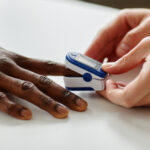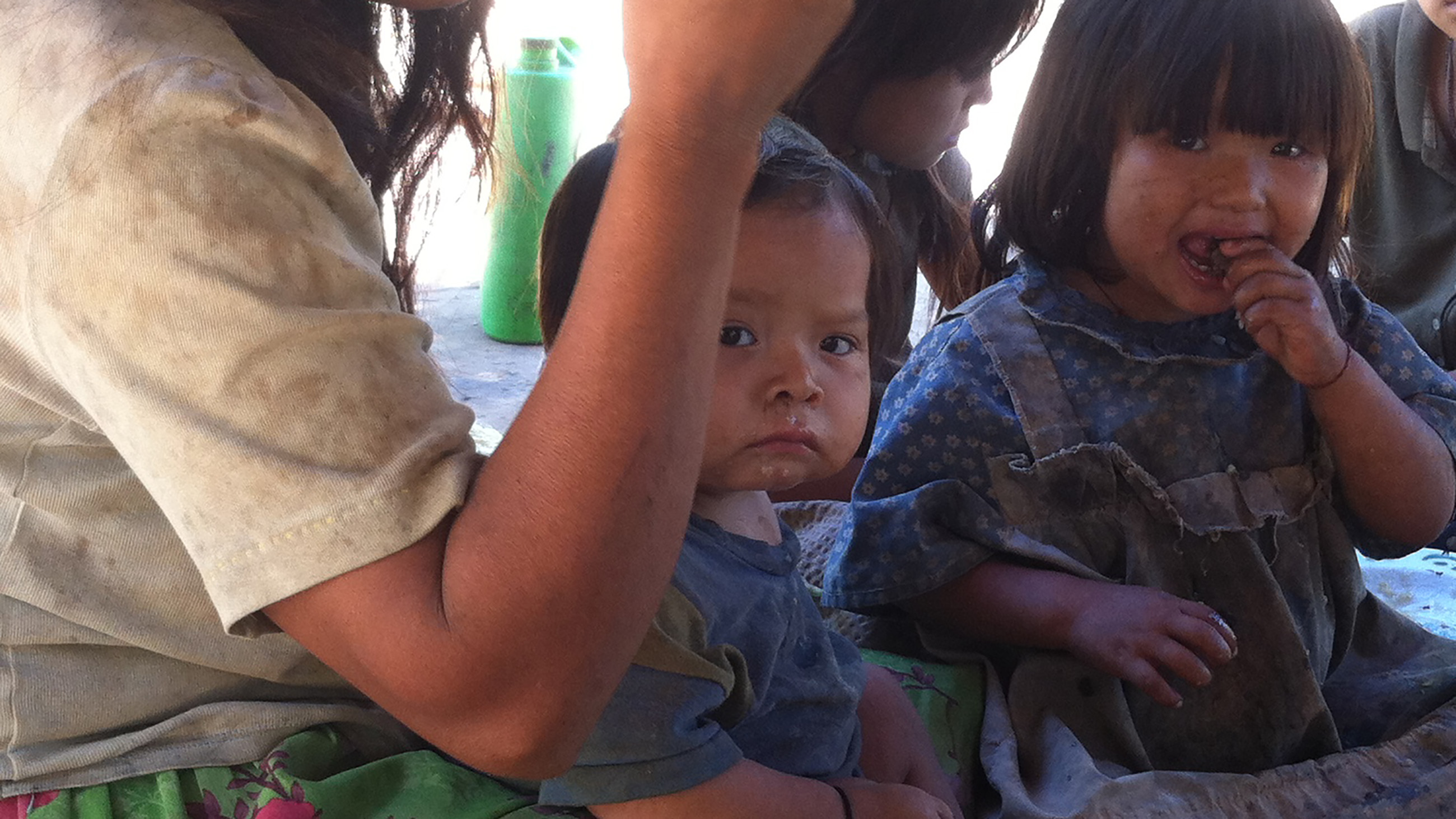The Science (and Culture) of Pre-Chewing Food for Children
On a trip to a society of forager-farmers in the Bolivian Amazon a few years ago, Melanie Martin asked a dozen Tsimane mothers to chew up their food and spit it into a cup — instead of their babies’ mouths. The Tsimane, like certain cultures around the world, feed their babies through premastication. When asked why they pre-chewed meals, responses varied.
“They’re just making sure there’s nothing in that spoonful that is going to burn the kid’s mouth or choke them,” says Martin, who visited the group when she was a graduate student in anthropology at the University of California, Santa Barbara.
Martin is part of a small group of researchers actively studying — and sometimes even trying — this ancient feeding practice. Ethnographers have documented premastication on every continent and in every type of society from hunter-gatherers to farmers. It remains surprisingly common in parts of the world today. Eighty percent of babies in Nigeria receive pre-chewed food, as do a quarter of infants in Gabon. Field workers have observed the practice throughout East and South Asia. Among HIV-infected mothers in Argentina, Brazil and Peru, many have heard of premastication, while 4 percent practice it. And in the United States, 1 in 7 caregivers — particularly black caregivers — report pre-chewing food.
Despite the prevalence, few leading public health agencies mention premastication in their guidelines and those that do discourage it due to a host of potential health risks.
Premastication is conspicuously absent from the World Health Organization’s literature on introducing babies to solid foods. (WHO spokesman Christian Lindmeier said an expert was unavailable to comment on the issue.) Meanwhile, the American Academy of Pediatrics advises against the practice due to the risk of disease transmission. While not addressing premastication directly, the American Academy of Pediatric Dentistry cautions against sharing utensils among family members.
Researchers have linked premastication to the spread of HIV, hepatitis B, dental caries, and syphilis from caregiver to baby. But beyond single-pathogen studies, broader inquiry into the practice such as its possible role in nutrition, immune health and parental bonding remains woefully scant.
Breast milk alone ceases to meet a baby’s nutritional needs around 6 months of age. But it takes up until about age 2 for babies to grow a full set of teeth. For over a year, babies occupy a nutritional gray zone. They can neither thrive on milk alone nor eat adult foods without modification such as blending, boiling or chopping. The rising popularity of baby-led weaning, or letting babies feed themselves from the adult table, partly circumvents these challenges. But foods rich in micronutrients that are a potential choking hazard, such as raw vegetables, chewy meats and nuts, remain a difficulty.
In 2010, epidemiologist Jean-Pierre Habicht and his wife, anthropologist Gretel Pelto, of Cornell University, hypothesized that premastication arose to close that nutritional gap. Writing in Maternal & Child Nutrition, they proposed that premastication may be as vital to child health as breastfeeding.
In developed countries, many older babies meet their nutritional needs with fortified foods such as Gerber and Cheerios. But in developing nations, where access to fortified foods remains limited and infections run rampant, physical and intellectual stunting is widespread, particularly in babies just starting on solids.
Nutrition aside, Habicht and Pelto further argued that because breast milk and saliva share many of the same antibodies, the beneficial bacteria present in premasticated food may protect against disease. The couple’s ideas created a stir, prompting the journal to publish six commentaries from prominent researchers on both sides of the premastication divide.
“The campaign against the barbaric practice of premastication,” Habicht says, “is very similar to the campaign in the 30s and 40s against the barbaric practice of breastfeeding.”
Researchers studying premastication suspect that Paleolithic parents pre-chewed vegetables, nuts and hunks of meat for their offspring. But it’s impossible to prove since pre-chewing leaves no archaeological trace.
The first known written record of the practice appears in 1025 AD. “After the first two teeth have appeared, a progressively stronger aliment [than breast milk] is to be considered,” wrote the Persian philosopher Avicenna in his five-part Canon of Medicine. “Hard things, however, must not be allowed. At first, bread is given which the nurse has masticated.”
By the 1600s, concerns over premastication had begun to emerge. Though noting that the common practice may aid in digestion, the German physician Michael Ettmüller cautioned that, should a caregiver’s gums be infected, the child may also receive that “morbificial Tincture.”
By the 20th century, evidence suggests the practice was being actively snuffed out. In the 1940s, researchers from the University of New Mexico in Albuquerque studying the displaced Shoshone Native Americans in Nevada found that mothers exclusively nursed their babies until they were able to eat on their own, or around age 1 or 2. That delayed start to solids was leading to high rates of anemia. “Some Indians informed the investigators that in the past their parents used to chew food and then place this previously masticated food in the infant’s mouth,” the authors wrote in The Journal of Nutrition in 1943. “Such a process was considered unhygienic by the invading culture and the practice was abandoned.”
In more recent years, premastication briefly became a buzzword in 2012 when Clueless star Alicia Silverstone posted a video of herself chewing the vegetables in her miso soup and transferring the resulting blob into her 10-month-old son’s mouth. The video went viral and prompted a range of reactions from disgust to solidarity.
As a nutrition expert with the United Nations, Joel Conkle was aware that mothers and grandmothers in Cambodia would often pre-chew food before giving it to babies. In 2014, he enrolled in a doctoral program at Emory University in Atlanta to study premastication full-time.
Earlier this year, Conkle and his colleagues combed through data from a national survey collected when babies were 10 months old, the age at which premastication tends to peak. Of the 1,770 women who responded at that point, 203 reported pre-chewing food in the previous two weeks. Conkle measured the prevalence of diarrhea in both groups: About 11 percent of babies in the conventional feeding group developed diarrhea compared to about 16 percent of babies in the premastication group.
Since diarrhea is one of the leading causes of death in children, the finding is particularly troubling for low-income countries. Even when it’s not lethal, chronic diarrhea puts infants at risk for malnutrition, says Conkle, who published the results online in Maternal & Child Nutrition last week.
Past studies have linked premastication to the transfer of various pathogens from caregiver to baby. A 2009 case study involving three U.S. children found evidence of HIV transmission when infected caregivers fed pre-chewed food to babies. That prompted the Centers for Disease Control and Prevention to advise caregivers with HIV to avoid premastication.
“Where safe, affordable, alternative feeding options are available, HIV-infected caregivers should refrain from this practice,” says Aditya Gaur, an infectious disease specialist at St. Jude’s Children’s Research Hospital in Memphis, Tennessee and the lead author on the HIV study.
But Cornell researchers Habicht and Pelto argue that the tendency to focus on a single pathogen or disease obscures the larger role premastication may play in nutrition and immune health. The duo has found an unexpected ally among supporters of the so-called hygiene hypothesis, which proposes that asthma, irritable bowel syndrome and allergies are rising in wealthy countries due to an overly sterile, or low-bacteria, environment.
Several years ago, Swedish researchers found that babies born to parents who cleaned their pacifiers by sucking on them had lower rates of allergies and eczema than babies born to parents who exclusively cleaned pacifiers with soap and water. Premasticated food may likewise be good for children, at least in wealthy areas, says Bill Hesselmar, a pediatric allergist at the University of Gothenburg and the study’s lead author. “If you worry too much,” he says, “you won’t even kiss your child.”
Deep in the rainforest, the Tsimane (pronounced chee-MAH-nay), tend to subsist on what they fish or hunt, and what they can grow, which includes rice, plantains, and manioc, a root vegetable also known as cassava. Their signature dish is jo’na – a stew made with manioc and meat or fish that when caught fresh is slow roasted for days and generously seasoned. Nowadays, the Tsimane visit regional markets and stock up on starches like pasta and charqie, a tough dried meat similar to beef jerky, which they then add to the jo’na.
“Basically they eat variations of the same stew with meat or fish and not really any flavoring except for a ton of salt,” says Martin, now an anthropologist at Yale University, who describes the stew as bland but delicious.
Over her lifetime, the average Tsimane woman bears nine children and breastfeeds exclusively until the baby reaches a few months old. At that point, many mothers start setting the babies on their laps during meals and feeding them pre-chewed food.
A few years ago, Martin along with Cliff Han, a geneticist at Los Alamos National Laboratories in New Mexico, collected saliva from 12 mother-baby pairs as well as premasticated jo’na samples from the mothers. Han then analyzed the bacteria in the samples in the lab.
Previous research has shown that bacteria, such as cavity-causing Streptococcus mutans, can travel from mother to child. Cavities are common in Tsimane children and their mothers. Toothbrushing is rare as is basic dental health care, Martin says, so “their teeth are awful.”
Han’s analysis showed that, at least up until age 2, it was impossible to identify mother-baby pairs through their oral bacteria, including Streptococcus mutans. In many cases, the strep was high in the mother but low in the baby. (In one case, Han found a baby with a high strep load and a mother with a low load.)
This means that tooth decay is likely arising from a different source than premasticated food. “Even though the mother feeds her microbiome to the baby, not everything can attach,” says Han, who presented the team’s findings at the Human Biology Association conference in Calgary, Canada in 2014.
For her part, Martin says she became pregnant while traveling with her husband to Tsimane territory three years ago, and that they decided then to follow the local eating tradition and pre-chew food after their daughter was born. “Spending all this time with Tsimane moms and watching how they feed their kids,” she recalls, “my one takeaway was that my kid was going to grow up sitting in my lap and eating everything that I eat.”
“It’s just like the laziest, easiest thing you can do,” she adds. “You never have to make kid food.”
Conkle says his wife briefly experimented with premastication as well — there is no known evidence for male pre-chewers — but it didn’t last. As he researched the practice, he began to question the purported benefits, particularly in the modern world. What is rarely mentioned, he says, is whether or not the mother is still breastfeeding, which would create a different suite of bacteria in the mouth and gut than babies who have weaned. Comparing and contrasting the various sorts of foods being pre-chewed is also largely unexamined, he says. Pre-chomping on a goldfish cracker, for instance, would yield none of the nutritional benefits found in meat or nuts, plus the starches would increase a child’s likelihood of developing cavities.
“When I looked at the evidence, I couldn’t really say if [premastication] was a good idea or a bad idea,” Conkle says, though he adds that the real reason premastication never took root in his household likely had less to do with science than upbringing.
“We didn’t premasticate regularly,” he says, “mostly because it’s not part of our current culture.”
Sujata Gupta is a Vermont-based science journalist. Her work has appeared online and in print in The New Yorker, New Scientist, Nature, High Country News, Scientific American, Wired, and Psychology Today among other publications.










